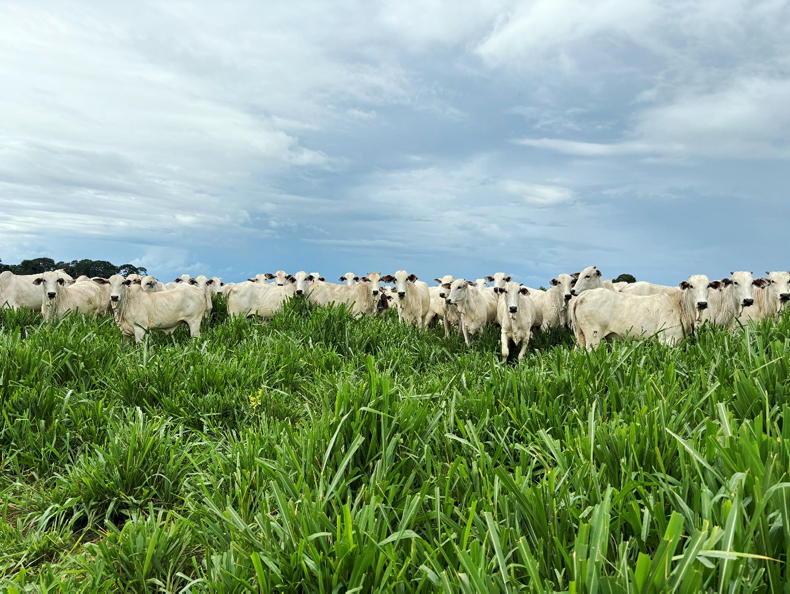Last week was the sixth week in a row in which the price gap between an Irish R3 steer and its UK counterpart was above €1/kg and now stands at €1.04/kg which is the equivalent of €400 per head on a 385kg R3 steer.
The differential was 91c/kg for the week ending 28 October last year. As Figure 1 shows, the gap has been particularly wide throughout 2024 compared with recent years, with the year-to-date differential on an R3 steer averaging 68c/kg.
The average gap across all of 2023 for the same grade was 55c/kg, and it was 33c/kg in 2022. See figure 2.
The beef price gap between Ireland and the UK has been above €1/kg on previous occasions, but this is the most prolonged period since 2008, the year that Bord Bia reporting or weekly price data begins.
Beef price tracker
As well as the price difference with the UK, a 38c/kg price gap has opened between the Irish price and prices paid across all Irish beef export markets as measured by the Bord Bia market tracker. The gap has developed since July when the Irish composite price was on par with the EU benchmark price and is now at the highest since October 2022 when the gap was 50c/kg.
This tracker is based on the farm gate prices paid in countries to which Ireland exports beef and is calculated on a pro rata basis depending on market share.
The composite Irish beef price in this model is calculated across all grades and type of cattle processed in Irish factories.
The UK, which accounts for almost half of all Irish beef exports, has a strong influence. This, however, is offset by lower priced countries like Netherlands where Ireland exports significant quantities of beef but usually it has a lower farm gate price than here.
When the UK is excluded from the Bord Bia calculation, the differential falls to 12c/kg.
While the price differential has been highlighted by the farm organisations, farmer reaction has been relatively muted. No doubt the fact that Irish beef prices are at record levels for this time of year and 54c/kg ahead of the same week last year has at least some influence on farmer sentiment.
Another factor is that the UK price is exceptionally strong and at a record high for a prolonged period. Strong retail demand for beef is also good news for UK farmers as seven out of the top 10 supermarkets stock only British beef. And while the other three (Tesco, Sainsbury’s and Asda) also stock Irish beef, the majority of their offering is also British.
US and Brazilian prices
High beef prices aren’t confined to the UK in the final quarter of 2024. In the US, beef prices have been around the equivalent of €6/kg for most of the past year.
This reflects a scarcity of cattle supply with the national herd at its lowest since 1951, and has seen US beef export volumes fall while imports have increased.
South American countries traditionally have the lowest beef prices globally and while they continue to lag well behind the US, UK and EU, they too have increased significantly over recent weeks.
Figure 3 shows the price increase reported for Brazil – this has levelled off in recent days, reflecting the fact that its currency has weakened against the Euro, but Brazilian prices have still increased by over a euro per kilo since August.
If Irish beef producers were told that prices would rise over the autumn months instead of falling as is the usual case and be over 50c/kg higher than last year, it would be classified as a good year.
Even the loss of China as a beef export destination has gone almost unnoticed in the market, reflecting the fact that there were better market opportunities for Irish beef throughout 2024.
However, even with current beef prices, specialised beef production remains a very low margin business.
The reality is that the market needs to deliver a strong farm gate price consistently to ensure specialised beef producers have a sustainable business model.
It may be unrealistic to expect an Irish beef price to be better than the UK beef price or even match it but we should be at least on par if not better than the Bord Bia EU benchmark price.
By including all export markets for Irish beef, the high value UK steer price is balanced by the continental young bull price.
At some points during the year, the Irish price compares favourably with this, but at present it lags well behind.
The market has to deliver a viable return for Irish beef production as there are alternative options for reducing or even ceasing production, especially on more marginal land.
In short
